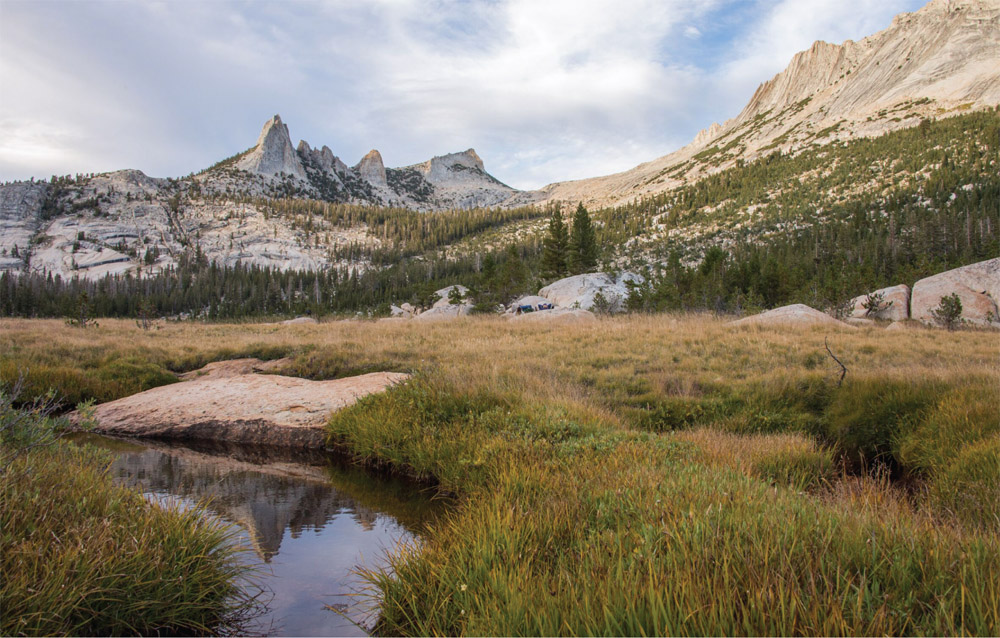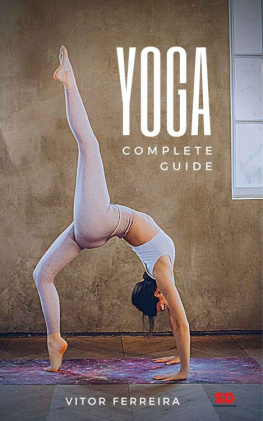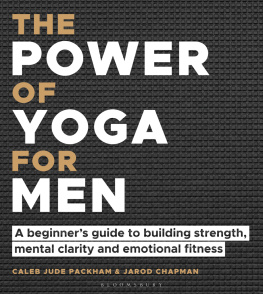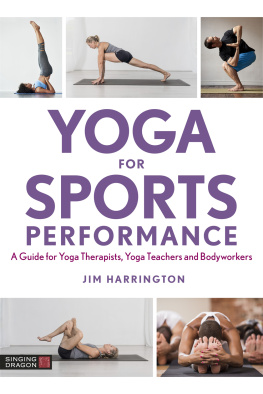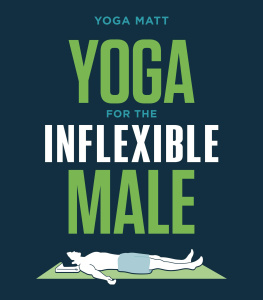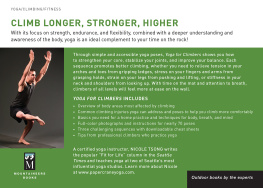CONTENTS
Guide
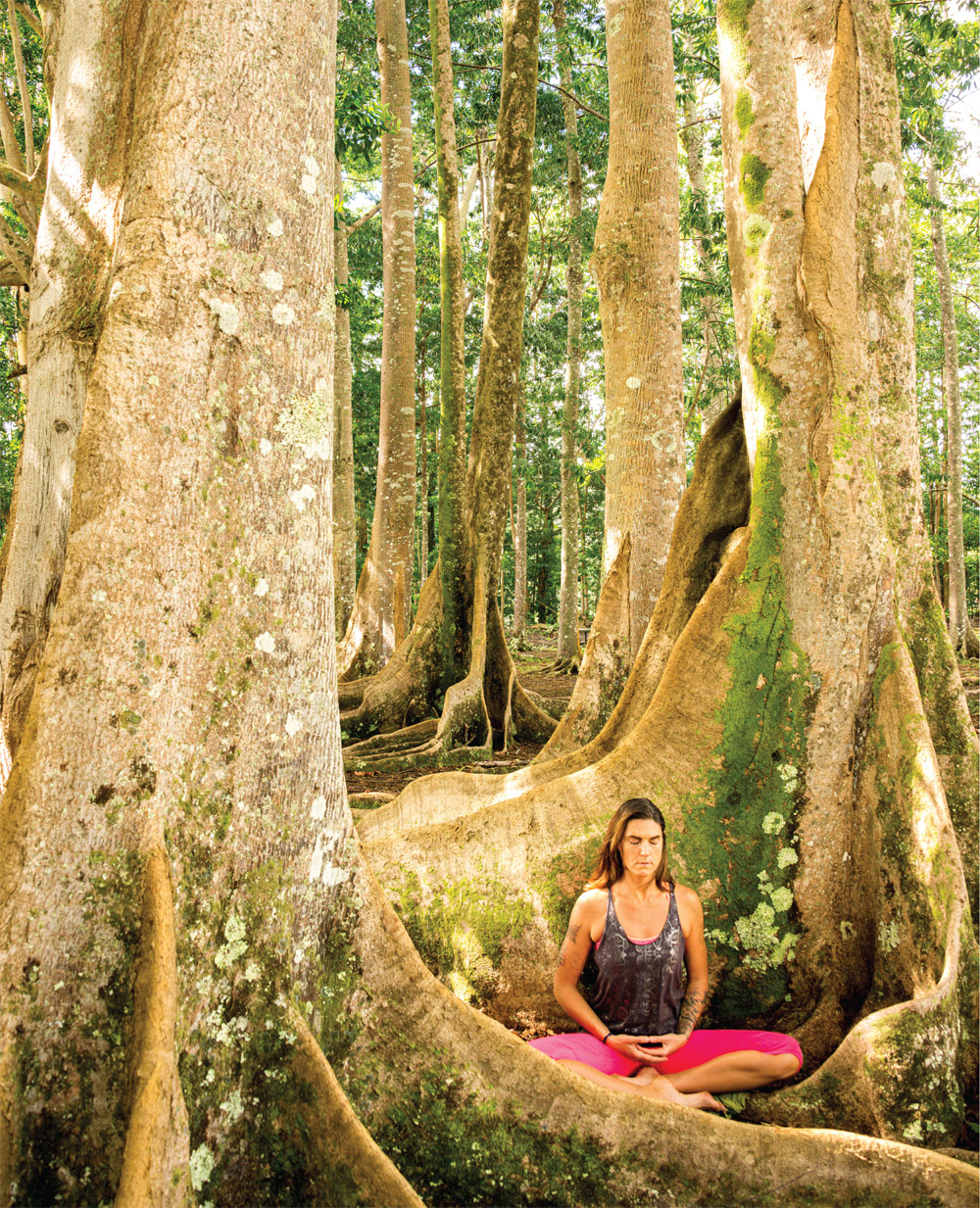

The very heart of yoga practice is abyhasa steady effort in the direction you want to go.
SALLY KEMPTON
YOGA, MEANING TO YOKE, TO JOIN, OR UNION, is the ancient system of holistic and harmonious living that arose from diverse and evolving cultures on the Indian subcontinent. While it is influenced by various traditions, including Hindu, Buddhist, and Jain, the philosophy, teaching, and practice of yoga are vast and beyond any religion. It is an ancient science of positive transformation that is applicable to anyone, anywhere in time. Slowly, the practice changes our patterns on a physical, mental, and emotional level to create inner and outer alignment.

Traditionally yoga was passed from student to teacher via oral and physical teaching as well as through ancient texts, songs, and practices. Nowadays there are many lineagesdifferent styles for different people and different times of life. What we think of as yoga in modern times is mostly the postures, called asanas, yet this is only one aspect of the yoga tradition that is Hatha yoga, the practice of disciplines that lead to evolution on every level. One of the older yogic texts, the Yoga Sutras by the sage Patanjali, explains eight limbs or types of practice for an engaged, balanced, and healthy life.
TIED TO THE IDEA OF TAKING AN ACTIVE SEAT WITHIN THE BODY AND MIND, AS OPPOSED TO OUR NORMAL DISTRACTION FROM THE BODY BY THE BUSY MIND, IS TO PRACTICE POSTURES WITH STEADINESS (STHIRA) AND SOFTNESS (SUKHA).
EIGHT LIMBS OF YOGA
Yamas
The first are the yamas, the principles of ethical behavior for our relationships with ourselves and others. Meaning to control or to contain, the yamas help us navigate lifes ups and downs with grace. These five principles build a foundation that encompasses all of life at home and on outdoor adventures.
Ahimsa: Often translated as non-harming, non-violence, or active kindness, it begins with practicing kindness and non-harming toward ourselves and extends to all other beings in the world. Ahimsa in the outdoors means opening our eyes to the effects of our presence and activities. It guides us to leave a place as we found it, and to not harm animals and environments.
Satya: This is the principle of honesty, truthfulness, and actively not deceiving ourselves or others. Ahimsa informs satya, so when practicing honesty, always ask yourself if what you are about to say is kind, true, and necessary. This can come into play when interacting with others in the outdoors. Satya inspires us to ask, how can we best communicate for the good of the whole?
Asteya: Translated as not stealing, this is in essence the practice of releasing desire for what we do not have or havent earned through honest work and means. This includes not taking what is not ours without permission. It means following park regulations and often leaving behind a beautiful stone, pinecone, or leaf. It challenges the notion that something is ours simply because we found it or want it.
Brahmacharya: Traditionally this word is translated as celibacy, directing ancient yogis to focus solely on the path of enlightenment, harnessing their energy. Modern interpretations of this principle speak to respect and integrity in relationships, especially intimate ones, and honoring our own personal energy as well as others. This might mean resisting every urge we have to run off-trail, achieve the highest peak even if were pushing daylight, or otherwise put our physical desires ahead of all else.
Aparigraha: Similar to asteya this principle means non-covetousness or non-hoarding. Living simply, with a content and generous heart, means we are not being greedy or taking more than what we need. On a personal scale it is sharing water and food with your fellow adventurers. Practicing aparigraha might even help you keep your pack light, challenging your need for every possession you might want on the trail.
Niyamas
The second limb of yoga turns from the external to the internal. The niyamas are the personal guidelines for a healthy relationship with ourselves on a physical, mental, and emotional level. Following these guiding principles enhances our personal health and well-being as we take responsibility for ourselves.
Saucha: Often translated as cleanliness or purity, this principle is one of tending to the physical body to support proper elimination and detoxification. Bathing regularly, oral hygiene, hydration, a balanced diet, and elimination are all recommended. When the body is functioning properly, we can enjoy our time in nature and with others. Since physical health and mental/emotional health are interconnected, tending to the body aids in mental clarity and calm.
Santosha: The yamas and saucha make it possible for the mind, body, and heart to become content, the common translation of this principle. It is meeting life on lifes terms, practicing self-acceptance and enjoying the journey. This helps us be present in our outdoor activities, and in the capacity of our body as well. In practice it is being happy with what we can do now and helps dissolve the desire to be someone or something else than we are right now.
Tapas: This Sanskrit word means to be hot and refers to the heat created by friction, rubbing, or steady pressure that is sustained over a period of timelike the repetition and dedication that creates strength, stamina, and skill. Its the effort to train for a sport, a race, or a big adventure. Discipline, steady focus on a goal, and the right effort help us become better humans. Steady pressure in a positive direction also helps us prepare for a trip or training session, giving it our best and relaxing afterward. Youll notice the literal heat that builds during this work. In the context of yoga, that heat does more than make you sweat.
Svadhyaya: Self-study and self-reflection are some translations of this word. It includes contemplation practices and the study of spiritual texts and sacred works. We intentionally practice self-awareness in all we do in the world, reflect regularly for inner guidance, and know when we need to change course. On a trail, river, boulder, or slope, self-reflection tells us how we need to prepare, if we are prepared, and how we are really doing along the way.
Ishvarapranidhana: This may be one of the most challenging principles for many people. Surrendering to a higher power or God looks different for everyone. The idea is to open to what is bigger than us, to life energy itself, to nature, the cosmos, the unknown. It is a way of taking our place among the infinite and remembering we are part of a whole that is carrying us at all times. In nature we can experience this spontaneously at the top of a mountain, skiing fresh powder with spectacular views, or paddling at sunset. We experience the magnificence of this power greater than ourselves in these moments of connection.
